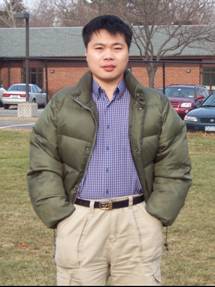
Prof. Xinfeng Liu (刘新锋)
University of South Carolina, USA
Email: xfliu@math.sc.edu
Abstract: Implicit integration factor (IIF) method, a class of efficient semi-implicit temporal scheme, was introduced recently for stiff reaction-diffusion equations. Advection-reaction-diffusion equations are traditionally difficult to handle numerically. For reaction-diffusion systems with both stiff reaction and diffusion terms, implicit integration factor (IIF) method and its high dimensional analog compact form (cIIF) serve as an efficient class of time-stepping methods. For nonlinear hyperbolic equations, front tracking method is one of the most powerful tools to dynamically track the sharp interfaces. Meanwhile, weighted essentially non-oscillatory (WENO) methods are a class of start-of-the-art schemes with uniform high order of accuracy in smooth regions of the solution, which can also resolve the sharp gradient in accurate and essentially non-oscillatory (ENO) fashion. In this talk, IIF/cIIF is coupled with front tracking or WENO by the second-order symmetric operator splitting approach to solve advection-reaction-diffusion equations. In the methods, IIF/cIIF methods treat the stiff reaction-diffusion equations, and front tracking/WENO methods handle hyperbolic equations that arise from the advection part. In addition, we shall introduce a method for integrating IIF/cIIF with adaptive mesh refinement (AMR) to take advantage of the excellent stability condition for IIF/cIIF. The applications of these numerical methods to fluid mixing and cell signaling will also be presented.
Date&Time: June 4, 2012 (Monday) 10:00 – 11:00 a.m.
Location: 606 Conference Room


